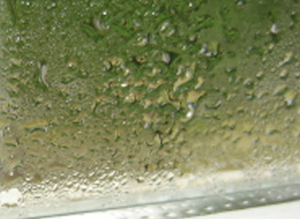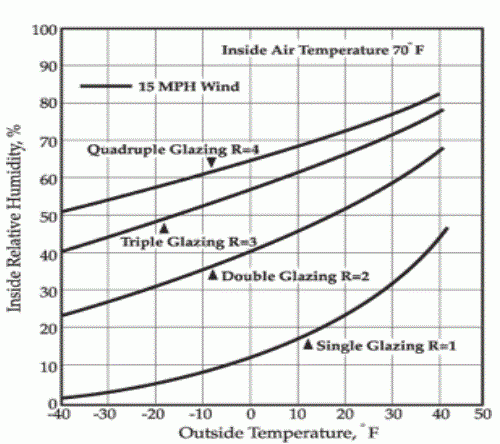
Window condensation occurs when the temperature of the inside glass drops below the dewpoint of the adjacent air. Window condensation can be caused by a variety of factors - excess moisture in the air, inadequate ventilation, temperature differentials, inefficient windows, and more.
Reducing the amount of moisture in the air is the first thing to look into when addressing window condensation issues. If the indoor relative humidity is above 35% when the weather turns cold, consider turning the humdifier down or off altogether. All homes are different and some don't require supplemental moisture added during the winter heating season. Tighter homes and those with more people living in them often have more than enough moisture in the air already. If humidity levels remain high without running any humidifier, some supplemental ventilation should be considered to head off any potential problems with mold or moisture damage to the building. If your indoor humidity levels are low and you are still experiencing significant window condensation, then the quality of your windows becomes more of a consideration when resolving the problem.
To read more about what causes condensation and how it can be impacted by window performance, read this article from the NFRC and review the chart below (Source: RLC Engineering, LLC). The chart illustrates the relationship between outdoor air temperatures, indoor relative humidity and window thermal efficiencies. Any points above the solid black lines may result in condensation forming on the surface of the windows. Note the difference in condensation resistance as the thermal performance of the window rises. Most new windows being installed today are double glazed (2 layers of glass).

If your windows are old, leaky or difficult to operate, consider replacing them with triple glazed super efficient, high performance R-5 and R-7 Windows from Energy360.
For more information about how we can identify the source of and eliminate problems like window condensation, contact us today to schedule a consultation.






